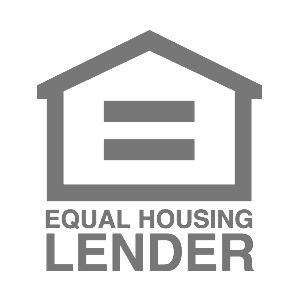Home Equity Loans (HELOANs) and Home Equity Lines of Credit (HELOCs) are two popular financing options that allow you to draw on the equity you’ve built in your home to pay for certain expenses. Both a HELOAN and a HELOC use your home as collateral, which means these financing options tend to boast lower interest rates than credit cards or personal loans.
Here are the main differences to consider when weighing a HELOC vs. home equity loan so you can make the best decision for your needs.

In This Article
The Simple Version
When you’re deciding whether to apply for a HELOC vs. home equity loan, calculate how much money you need and when, and whether you want a fixed or variable monthly payment. HELOCs are great if you want the flexibility to borrow as needed over a longer period of time, while HELOANs are a great way to access a one-time lump sum of money. Keep in mind that with both options, your home is used as collateral in exchange for lower interest rates and larger credit limits. Talk to your lender to see which option is best for you.
What Is Home Equity?
The equity you have in your home is a fluctuating figure representing the difference between your current mortgage loan balance (plus any existing HELOC or home equity loan balances) and your property’s current value.
For example: If your home is worth $400,000 and your current mortgage balance is $300,000, you have a $100,000 equity stake in your property.
There are two primary ways home equity is built:
- Part of your monthly mortgage payment goes toward the principal loan balance.
- The value increases due to improvements and changes in the real estate market.
Accessing Your Home Equity
Just as there are two distinct ways to build equity, there are also two primary ways of accessing your home’s equity; Through a home equity loan or a home equity line of credit (HELOC). Let’s take a look at the home equity loan vs line of credit pros and cons to see which might be best for you and your financial needs.
HELOC vs Home Equity Loan
What’s a HELOC?
A HELOC is a revolving line of credit from which you can borrow at any time during the “draw period,” which typically lasts 10 years. The bank or lender will provide you with a maximum line amount, similar to a credit limit, and you can borrow up to that limit as needed during the draw period. You’re only responsible for paying back the amount you borrow. Each time you make a payment on your HELOC, your line of credit replenishes, just as it would when you pay down a credit card balance. During the draw period, your monthly payment options can be flexible, sometimes including interest-only payments.
HELOC Pros and Cons
Most HELOCs come with a variable interest rate, which means the interest rate may go up or down depending on market conditions. Once the draw period ends, you can no longer borrow any additional funds. You’ll then enter a repayment period, during which you’ll pay back the principal amount plus interest. The repayment period typically lasts between 10 and 20 years.
Offering competitive interest rates and an online application process, Prosper’s HELOC program lets you see your rate and borrowing limit instantly without impacting your credit. You can also check numbers using our HELOC calculator. Now let’s take a look at the pros and cons of home equity lines of credit in general.
Pros:
- Borrow only what you need, when you need it (like a credit card) during the draw period (typically 10 years).
- Ability to borrow from the home equity line of credit repeatedly during the draw period.
- Payments will only be due on the portion of the line of credit you use.
- Lower, interest-only payments may be available during the HELOC draw period.
Cons:
- Possibility of overspending with a revolving line of credit.
- Variable interest rate could rise due to economic and market conditions.
- Fluctuating monthly payments could make budgeting a challenge.
Additionally, there could be home equity line of credit tax advantages, although 2017 tax law changes made this more complicated than before. In short, interest on home equity money borrowed after 2017 is only tax-deductible for buying, building, or improving properties. Because this particular tax law is complicated, you should consult a tax professional before applying for a HELOC to determine whether you may be eligible for any home equity line of credit tax advantages.
What’s a HELOAN?
When you qualify for a home equity loan, you’ll receive the loan in a lump sum upfront. Most HELOANS have a fixed interest rate, so your monthly payment (including principal and interest) will remain the same throughout the lifetime of the loan.
Home Equity Loan Pros and Cons
After qualifying for a home equity loan, you will receive your loan amount as a single lump sum and begin to make monthly repayments immediately on the entire amount borrowed. Home equity loans typically have a fixed interest rate, meaning your monthly payment — including the principal and interest — will remain the same throughout the life of the loan.
Pros:
- Fixed monthly loan payments offer predictability with which to plan and budget for today and the future.
- Receiving funds in a lump sum could be beneficial if you plan to use the money for one thing or a major project with a bill due in full.
- The fixed interest rate will not change with market conditions during the life of the loan.
Cons:
- Home equity loan payments begin immediately.
- Payments are calculated on the entire borrowed lump sum amount whether or not you use it all.
When is a HELOC the best option?
When you’re considering a HELOC vs. home equity loan, think about the amount that you actually need. If you’re not sure exactly how much you’ll be spending but want to be able to cover unexpected costs that may arise over a long period of time, a HELOC may be the best fit for your situation. If you suspect you’ll need to draw money over time, like with a long-term project or a larger ongoing expense, a HELOC may be best for you. A HELOC also gives you the flexibility to borrow only the amounts you need and pay back those amounts as you go.
When is a HELOAN the best option?
A HELOAN may be a better fit for you if you have fixed costs and you prefer the stability of a long-term, fixed monthly payment. Since HELOANs provide a one-time lump sum of money, this type of loan may be better for a larger, one-time expense–like a vacation or an unexpected medical bill. With a Home Equity Loan, you’ll also have the benefit of a spending cap already in place, and you’ll know exactly how much you’ll have to repay.
Eligibility for a home equity loan or HELOC up to the maximum amount shown depends on the information provided in the home equity application. Depending on the lender, loans above $250,000 may require an in-home appraisal and title insurance. Depending on the lender, HELOC borrowers must take an initial draw of the greater of $50,000 or 50% of the total line amount at closing, except in Texas, where the minimum initial draw at closing is $60,000; subsequent HELOC draws are prohibited during the first 90 days following closing; after the first 90 days following closing, subsequent HELOC draws must be $1,000, or more, except in Texas, where the minimum subsequent draw amount is $4,000.
The amount of time it takes to get funds varies. It is measured from the time the lender receives all documents requested from the applicant and depends on the time it takes to verify information provided in the application. The time period calculation to get funds is based on the first 4 months of 2023 loan fundings, assumes the funds are wired, excludes weekends, and excludes the government-mandated disclosure waiting period.
For Texas home equity products through Prosper, funds cannot be used to pay (in part or in full) non-homestead debt at account opening.
Depending on the lender, qualified home equity applicants may borrow up to 80% – 95% of their primary home’s value and up to 80% – 90% of the value of a second home. In Texas, qualified applicants may borrow up to 80% of their home’s value. HELoan applicants may borrow up to 85% of the value of an investment property (not available for HELOCs).
Home equity products through Prosper may not be available in all states.
All home equity products are underwritten and issued by Prosper’s Lending Partners. Please see your agreement for details.
Prosper Marketplace, Inc. NMLS# 111473
Licensing & Disclosures | NMLS Consumer Access


